Introduction
When it comes to exotic indoor plants, few can boast the blend of beauty, ease of care, and rich history that is associated with Hoya Sunrise. This introduction provides a bird’s eye view of the intriguing world of this plant.
A Mesmerizing Overview
Firstly, Hoya Sunrise is a stunning hybrid plant. It takes great pride in its lush foliage that is painted with shades of green and a unique bronze overlay. Undoubtedly, this captivating display creates a visual feast for plant lovers.
A Historical Dig
Carrying the name Hoya might give you a hint about its origin. Hoya Sunrise, also known as the “Wax Plant,” finds its roots in Eastern Asia and Australia. Known for its thick, waxy leaves and star-shaped flowers, this plant has garnered the admiration of horticulturists worldwide.
In our historical journey, we’ll discover that the name ‘Hoya’ pays tribute to Thomas Hoy, the gardener to the Duke of Northumberland who first cultivated this genus in the 18th Century. This plant’s rich historical lineage only accentuates its charm, making it an alluring choice for houseplant enthusiasts.
In the upcoming sections, get ready to delve deeper into the captivating physical attributes, ideal growing conditions, and effective propagation methods for this botanical gem. Stay with us as we journey through the captivating world of Hoya Sunrise.
Description of Hoya Sunrise
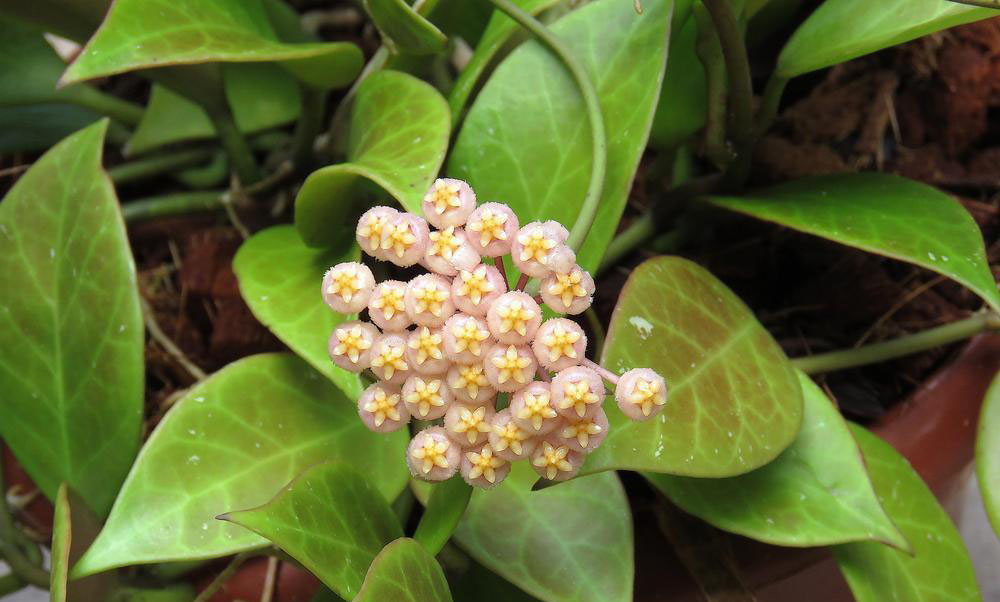
To appreciate the charm of Hoya Sunrise, let’s explore its distinctive physical attributes. From its attention-grabbing foliage to its exquisite floral arrangement, every element of this plant warrants a closer look.
Unraveling Its Leaf Anatomy
Dressing up in a rich palette of colors, the leaves of the Hoya Sunrise are nothing short of a dramatic spectacle. Typically, they exhibit deep green hues with an overlay of coppery red. This overlay, intriguingly, becomes more prominent when the plant receives ample sunlight. With its thick, waxy, and almost succulent-like leaves, Hoya Sunrise stands as a robust indoor plant resistant to many common plant problems.
Craving attention, the leaves have a tendency to gradually change color, reflecting different shades of crimson and bronze as they mature. This color transformation, indeed, is why plant lovers affectionately refer to this plant as the ‘Sunrise’ of their indoor garden. The oval-shaped leaves, filled with remarkable veins, add another layer of texture to this plant’s aesthetics.
Exploring the Floral Charm
Beyond the foliage, this plant catches our attention with a unique floral arrangement. Hoya’s flowers form charming bundles when they group together in an inflorescence, unlike most other flower-bearing plants. The attractive star shape of each flower in this bundle stands out intriguingly against the sturdy, oval leaves. These flowers, which typically bloom in the warmer months, give this attractive plant a little extra charm.
Growing Conditions for Hoya Sunrise
Understanding the ideal growth conditions of the Hoya Sunrise is instrumental in nurturing this botanical masterpiece with proficiency. So, let’s dive right into exploring these aspects.
Light: Shining the Right Amount
Although not picky, this plant does prefer direct, bright light. While too little light may stunt growth, too much direct sunlight risks burning the leaves. Hoya Sunrise is best situated in an area with good lighting but away from harsh, direct sunlight.
Temperature for Hoya Sunrise
Favoring warmer climates, Hoya Sunrise thrives best in temperatures between 60 to 85 degrees Fahrenheit (15 to 29 degrees Celsius). However, bear in mind that these plants can tolerate slightly lower temperatures, but frosty conditions are a definite no-go. Hence, if you live in an area with cold winters, it’s best to grow your Hoya indoors or move it inside during the chilly months.
Watering: The Basics
Watering your Hoya Sunrise must be done with care because, like most Hoya species, it doesn’t appreciate overwatering. Only water when the top layer of the soil feels dry to the touch and ensure proper drainage to avoid waterlogging. Remember, it’s always better to underwater than overwater this plant as it can tolerate drought better than excessive moisture.
Soil: Getting the Mix Right
When it comes to soil, your Hoya Sunrise prefers a well-draining mixture. Use a good-quality potting mix combined with perlite or orchid bark in equal ratios. This mix ensures the necessary drainage and provides the plant with sufficient airflow, contributing to a healthier root system.
Propagation Techniques for Hoya Sunrise

Spreading the joy of Hoya Sunrise can be quite an exhilarating journey. To make this journey hassle-free, this section delves into the effective propagation techniques and potential problems you may encounter and their solutions.
Stepwise Procedure for Propagation
- Selecting the Stem: Begin by selecting a healthy looking non-flowering stem, typically 4 to 6 inches long, with at least a couple of nodes. This stem piece will eventually transform into a new plant.
- Preparing the Stem: After cutting the selected stem, allow the end to dry out and callus for a few hours or overnight.
- Planting the Stem: Once the cutting is ready, plant it in a well-draining potting mix. Ensure that at least one node is buried beneath the soil, as this is where roots will eventually sprout.
- Caring for the Cutting: Position this newly planted cutting in a place with bright, indirect light and maintain regular watering but avoid overwatering.
Ideal Season for Propagation
Hoya Sunrise favors the warmer months, typically spring or early summer, for propagation. This gives the new plant ample time to establish its root system before the cooler months set in.
Common Propagation Problems and Solutions
Problem: Cutting wilts or rots without rooting.
Solution: Overwatering is often the culprit here. Ensure the soil is moist but not wet, and always allow the top layer of soil to dry out before the next watering.
Problem: Cutting develops leaves but no roots.
Solution: This may be due to the cutting being too small. Ensure your cuttings are at least 4 to 6 inches long with a couple of nodes to enhance root development.
With these effective propagation techniques and problem-solving tips, you’ll be all set to multiply your Hoya Sunrise, brightening not just your indoor garden but also those of your friends and family.
Tips for Hoya Sunrise Care
To ensure the well-being of your delightful Hoya Sunrise, some additional care and attention are essential. The following helpful tips will guide you in maintaining the plant’s health and enhancing its growth.
Pruning and Trim: Sustaining Growth
Periodic pruning is beneficial for your Hoya Sunrise. Gentle trimming prevents the plant from becoming too leggy and helps maintain a bushier appearance. Take care to remove any dead or damaged leaves and stems, as they can curtail the growth of this exquisite plant.
Additionally, keep in mind that this plant produces flowers on the peduncles of its older stems. Avoid trimming these because doing so might stop the plant from blooming.
Fertilization for Hoya Sunrise
Though not mandatory, fertilization can boost the growth and health of your Hoya Sunrise. Use a balanced liquid fertilizer diluted to half-strength, and follow the instructions mentioned on the label. Apply it during the growing season, which typically spans from spring to early fall, and avoid fertilization in the winter.
Pest Management for Hoya Sunrise
Thankfully, Hoya Sunrise is a relatively pest-resistant plant. However, it can still be susceptible to common plant pests, such as aphids, mealybugs, and spider mites. Regular inspection of your plant can help detect any issues early on, allowing for prompt and effective management. You can use a mild insecticidal soap or neem oil to treat any infestations found. Always follow the recommended guidelines for these treatments to protect your plant from potential harm.
Support System: A Scaffold for Growth
This plant grows longer and heavier vines. Give the plant a trellis or other support structure to avoid breaking the main stem or the fragile branches. This not only aids in keeping the shape of this climbing plant, but it also improves its aesthetic appeal.
Health Benefits of Hoya Sunrise
A key point to note in the journey of indoor gardening is the incredible health benefits that accompany the presence of our leafy companions. Hoya Sunrise, with its lush leaves and vibrant charm, offers several wellness advantages that go beyond its aesthetic appeal.
Air Purification: A Breath of Fresh Air
Hoya Sunrise plays an impressive role in air purification. This plant has the ability to remove toxins from the air, making your living spaces healthier. Consistently removing harmful substances such as formaldehyde, benzene, and xylene, Hoya Sunrise not only adds a touch of nature to your surroundings but also contributes to cleaner and fresher indoor air.
Humidity Regulation: A Natural Humidifier
Our Hoya Sunrise acts as a natural humidifier. Through a process termed transpiration, plants release moisture into the air, thereby increasing indoor humidity. This is especially beneficial in dry conditions, helping to reduce the incidence of dry skin, sore throats, and dry coughs.
Wellness and Mental Health Booster
Tending to your Hoya Sunrise is a therapeutic process in itself. The act of caring for plants can be a relaxing and rewarding experience, helping to reduce stress and improve mood. Additionally, the presence of plants in your living spaces is known to enhance productivity and creativity while also promoting a sense of overall well-being.
Sleep Enhancement
As a natural air purifier, Hoya Sunrise has a positive impact on sleep quality. By providing cleaner air and regulating humidity, this plant can contribute to a more comfortable sleep environment, assisting in better rest and rejuvenation.
Conclusion
Learning how to care for your Hoya Sunrise and understanding its health benefits can enhance both your gardening experience and your overall well-being. At every stage, from propagation to regular maintenance, the plant teaches us the importance of patience, consistency, and nurturing. Witnessing its growth is not only a satisfying experience but also a life-affirming one.
Moreover, the inclusion of Hoya Sunrise in your space can significantly improve the quality of your indoor air, regulate humidity, boost your mental health, and even enhance your sleep quality. In essence, this lovely plant presents a unique combination of beauty, hardiness, and health benefits.
Whether you’re a seasoned or a novice gardener, growing this plants is likely to be a fulfilling journey imbued with natural beauty and various health benefits. So, let’s embrace the joy of indoor gardening with Hoya Sunrise and reap the well-being rewards it naturally offers. Happy gardening!

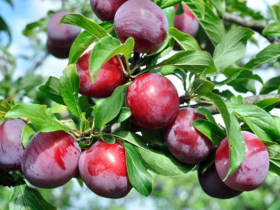
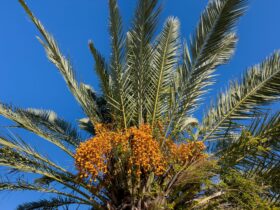
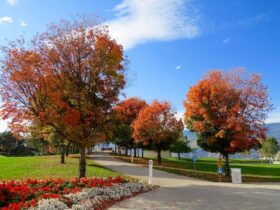
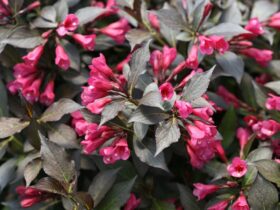
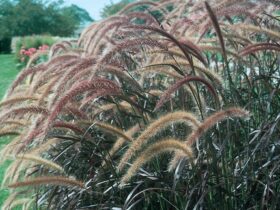
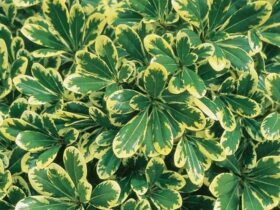

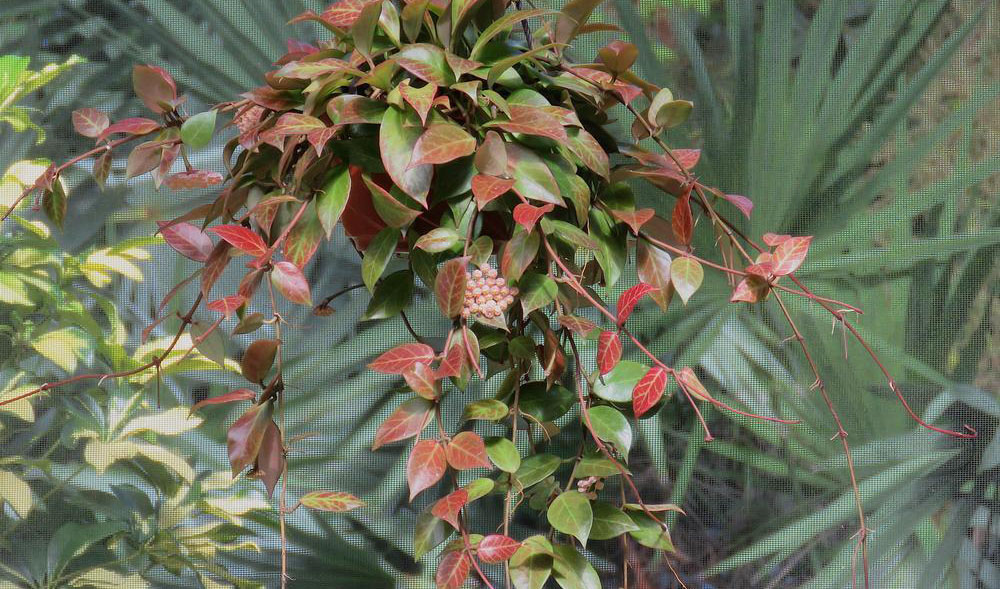
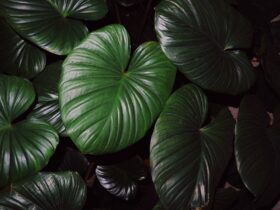

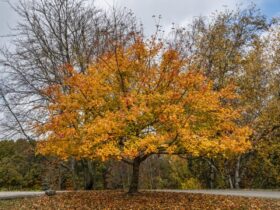
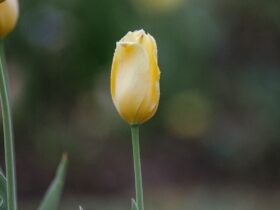
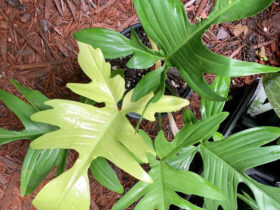
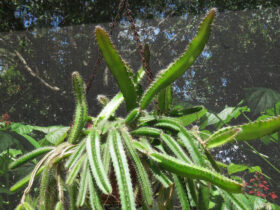
Leave a Reply